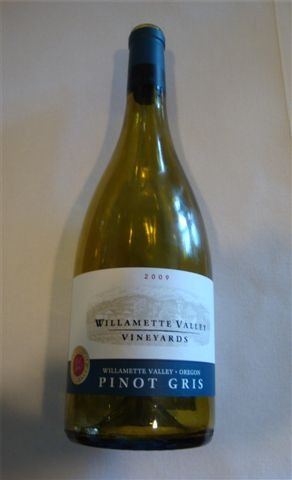Why You Should Be Drinking Pinot Gris
I doubt that very many people do know about pinot gris. That's a shame. It is one of the most food-friendly white wines (especially when domestic wines are considered) and it is generally very affordable. So with that introduction, let me first provide a bit of history.
In the Middle Ages, pinot gris appeared in the Burgundy region of France as a white mutation of the red pinot noir. Today, pinot gris is grown in nearly 20 countries, but under different names. Pinot gris and pinot grigio are the same grape with two different names. There are four primary growing areas — in Italy and California it is known as pinot grigio; in France and Oregon, it is know as pinot gris. In other areas, it has a variety of different names, such as rulander in Germany and Austria.
However, the wines from the same grape grown in diverse areas are really different. For me, in the Alsace region of France, pinot gris is quite rich and very fruity with a nice spiciness. However, it often tends to be very intense and can be quite high in alcohol. It is also often made in a late harvest, sweet style, which is very lush and attractive as a dessert wine. The pinot gris from Oregon is at the other end of the spectrum — it is lighter, has more subtle fruit, and a nice crispness. It emphasizes finesse over power. The pinot grigios from Italy are generally light, fresh, and easy to drink. Some of the better ones have more complexity and the lesser ones tend to be very light, but still very quaffable. Those from California tend to be fruitier.
Those are my general impressions, but you should really try them for yourself. Have a buffet dinner party with a wide variety of foods and have a wine from each area. Match them with the different foods and draw your own conclusions. If you do have one of the richer wines from Alsace (not the late-harvest dessert wines), you might try those with something liked grilled sausage. But of all the different styles, if I were to choose an overall favorite, it would be Oregon pinot gris. The wines generally have a lovely, elegant, subtle fruit with nice complexity and crispness. They are terrific with fish (especially salmon), and are great with pork and chicken, as well as seafood salads and chicken salads. The one described below is an outstanding example.
2009 Willamette Valley Vineyards Pinot Gris, Willamette Valley, Oregon
Pinot gris was first introduced to the U.S. in the Willamette Valley. David Lett, a pioneer vintner in the area and the founder of Eyrie Vineyards, planted the first vines here in 1966. The back label of this Willamette Valley Vineyards Pinot Gris has very useful consumer information. It says in part "...Small amounts of muscat, for enhanced floral aromas, and pinot blanc, for greater mouth feel, were added as was some barrel-fermented pinot gris for a kiss of toast and richness..." This recipe really works, as the wine shows the finesse and style that exemplify Oregon Pinot Gris. It is pale yellow in color and has a gorgeous perfume, with hints of pear and apple and floral and spice nuances. Refined and elegant, yet complex, the wine has flavors of apple and pear with a hint of citrus and spice. Very tasty and extremely well balanced, it has a nice crispness and a lovely finish. The alcohol is 12.5 percent, making it extremely compatible with a wide variety of lighter foods, especially fish. This is one to buy.
— Outstanding. $12.99 Best Buy ***
